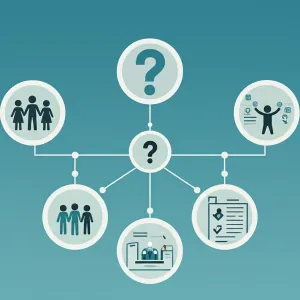Is There a “Pay-Per-Ticket” Help Desk Software for Small Business?
- account_circle admin
- calendar_month Ming, 21 Sep 2025
- visibility 1.067
- comment 0 komentar

Is There a "Pay-Per-Ticket" Help Desk Software for Small Business?
The Myth and Reality of “Pay-Per-Ticket” Help Desk Software for Small Businesses
KlikBabel.com – Is There a “Pay-Per-Ticket” Help Desk Software for Small Business? For small businesses operating on tight budgets, every dollar counts. When it comes to customer support, the idea of a “pay-per-ticket” help desk software sounds incredibly appealing. Imagine a system where you only pay for the support tickets you actually handle – no hefty monthly subscriptions for unused capacity. It’s a concept that whispers of efficiency and cost-effectiveness. But is this elusive “pay-per-ticket” model a genuine reality in the world of help desk software for small businesses?

Is There a “Pay-Per-Ticket” Help Desk Software for Small Business?
The short answer is: rarely, and not in the way you might initially envision. While the concept is enticing, a true “pay-per-ticket” model is incredibly uncommon for robust, feature-rich help desk solutions aimed at businesses. However, understanding why and exploring the closest alternatives is crucial for making informed decisions.
Why the “Pay-Per-Ticket” Elusiveness?
Several factors contribute to the scarcity of true pay-per-ticket help desk software for businesses:
- Infrastructure and Maintenance Costs: Running a reliable help desk software involves significant infrastructure, server maintenance, security updates, and ongoing development. Providers need a predictable revenue stream to cover these substantial operational expenses. A purely per-ticket model would make budgeting and resource allocation incredibly challenging for the software vendor.
- Value Beyond Individual Tickets: A comprehensive help desk system offers far more than just ticket tracking. It provides reporting, analytics, automation, knowledge base integration, team collaboration tools, and often, integrations with other business systems. These features deliver ongoing value to a business, regardless of the exact number of tickets processed in a given month. Pricing models that reflect this broader value are more sustainable for providers.
- Predictability for Businesses: While the appeal of paying only for what you use is strong, a truly variable per-ticket cost can also create unpredictability for businesses. What if you have a sudden surge in customer inquiries? Your costs could skyrocket unexpectedly, making financial planning difficult. Most businesses prefer a more stable, albeit potentially higher, baseline cost for essential services.
- Scalability Challenges: A true per-ticket model would require incredibly granular tracking and billing systems, which can be complex to implement and manage efficiently. For software providers aiming for scalability, a tiered or subscription-based model is generally more practical.
What Small Businesses Often Mean by “Pay-Per-Ticket”
When small business owners inquire about “pay-per-ticket” help desk software, they are often looking for:
- Affordable Entry Points: They want to start with a solution that doesn’t break the bank and can grow with their business.
- Cost-Effectiveness: They are keen to avoid paying for features or capacity they don’t utilize.
- Scalable Pricing: They want a solution where costs increase incrementally as their support needs grow, rather than facing a massive jump in price.
The Closest Alternatives and What to Look For:
While a pure “pay-per-ticket” model is rare, several pricing structures offer similar benefits for small businesses:
- Tiered Pricing Based on Features and Volume: This is the most common and practical model. Providers offer different plans (tiers) that include a certain number of support agents, a set amount of ticket volume, and a range of features. As your business grows and your ticket volume increases, you can upgrade to a higher tier.
- What to look for:
- Generous Free Tiers or Trials: Many reputable help desk solutions offer free plans for very small teams or extensive free trials, allowing you to test the waters without financial commitment.
- Low Entry-Level Plans: Seek out providers with affordable starting plans that offer essential functionalities.
- Clear Upgrade Paths: Understand how the pricing scales and what features become available at each tier.
- Agent-Based vs. Ticket-Based Limits: Some plans might limit the number of agents, while others might have ticket volume caps. Understand which aligns better with your operational model.
- What to look for:
- “Freemium” Models: Some software providers offer a basic version of their help desk software for free, with limited features and user numbers. Paid plans unlock more advanced functionalities and allow for a larger team.
- What to look for:
- Sufficient Functionality in the Free Tier: Ensure the free version provides enough tools to manage your current support needs.
- Affordable Premium Upgrades: When you outgrow the free tier, the paid plans should still be reasonably priced for a small business.
- What to look for:
- Pay-As-You-Go (Less Common for Full-Featured Solutions): In some niche or very basic ticketing systems, you might find a model where you pay for each ticket resolved or for a certain number of tickets per month. However, these often lack the comprehensive features of dedicated help desk software.
- What to look for:
- Understand the “Resolution” Definition: What constitutes a resolved ticket? Is it closed, or does it require specific criteria?
- Hidden Costs: Be wary of additional fees that might not be immediately apparent.
- What to look for:
Key Considerations for Small Businesses:
When evaluating help desk software, prioritize these factors:
- Ease of Use: Small teams often have limited IT resources. The software should be intuitive and easy for everyone to learn and use.
- Essential Features: Focus on what you need. This typically includes ticket management, customer communication channels (email, chat), basic reporting, and a knowledge base.
- Integration Capabilities: Can it integrate with your CRM, email marketing tools, or other essential business software?
- Customer Support from the Provider: Even with self-service software, good support from the vendor can be invaluable.
- Scalability: Can the software grow with your business without forcing a complete system overhaul?
While the dream of a true “pay-per-ticket” help desk software for small businesses remains largely a myth, the market offers compelling alternatives. By understanding the pricing models and focusing on solutions that provide affordable entry points, scalable features, and excellent value, small businesses can find the perfect help desk software to enhance their customer support without straining their budget. The key is to look beyond the “pay-per-ticket” allure and focus on the overall cost-effectiveness and functional fit for your unique business needs.
Frequently Asked Questions (FAQ)
Q1: Are there any free help desk software options for small businesses?
A1: Yes, many help desk software providers offer “freemium” plans or extended free trials. These free versions typically cater to very small teams (e.g., 1-3 agents) and offer core ticketing functionalities, basic automation, and sometimes a limited knowledge base. While they might not have all the advanced features of paid plans, they are an excellent starting point for small businesses looking to organize their customer support without initial investment.
Q2: What are the main advantages of using help desk software for a small business, even if it’s not “pay-per-ticket”?
A2: Even without a strict pay-per-ticket model, help desk software offers significant advantages. These include centralized communication, ensuring no customer inquiry falls through the cracks; improved response times and customer satisfaction; efficient team collaboration on tickets; the ability to build a valuable knowledge base for self-service; and valuable data and analytics to understand customer needs and support team performance. These benefits contribute to increased efficiency, customer loyalty, and ultimately, business growth.
Q3: How can I ensure I’m not overpaying for help desk software if there’s no “pay-per-ticket” option?
A3: To avoid overpaying, carefully assess your current and projected support needs. Look for providers with tiered pricing that allows you to start with a basic, affordable plan and upgrade as you grow. Pay attention to what features are included in each tier and whether you’ll realistically use them. Take advantage of free trials to test the software’s functionality and ease of use. Also, consider the total cost of ownership, including any setup fees, training, or integrations, before committing to a plan.
- Penulis: admin












Saat ini belum ada komentar